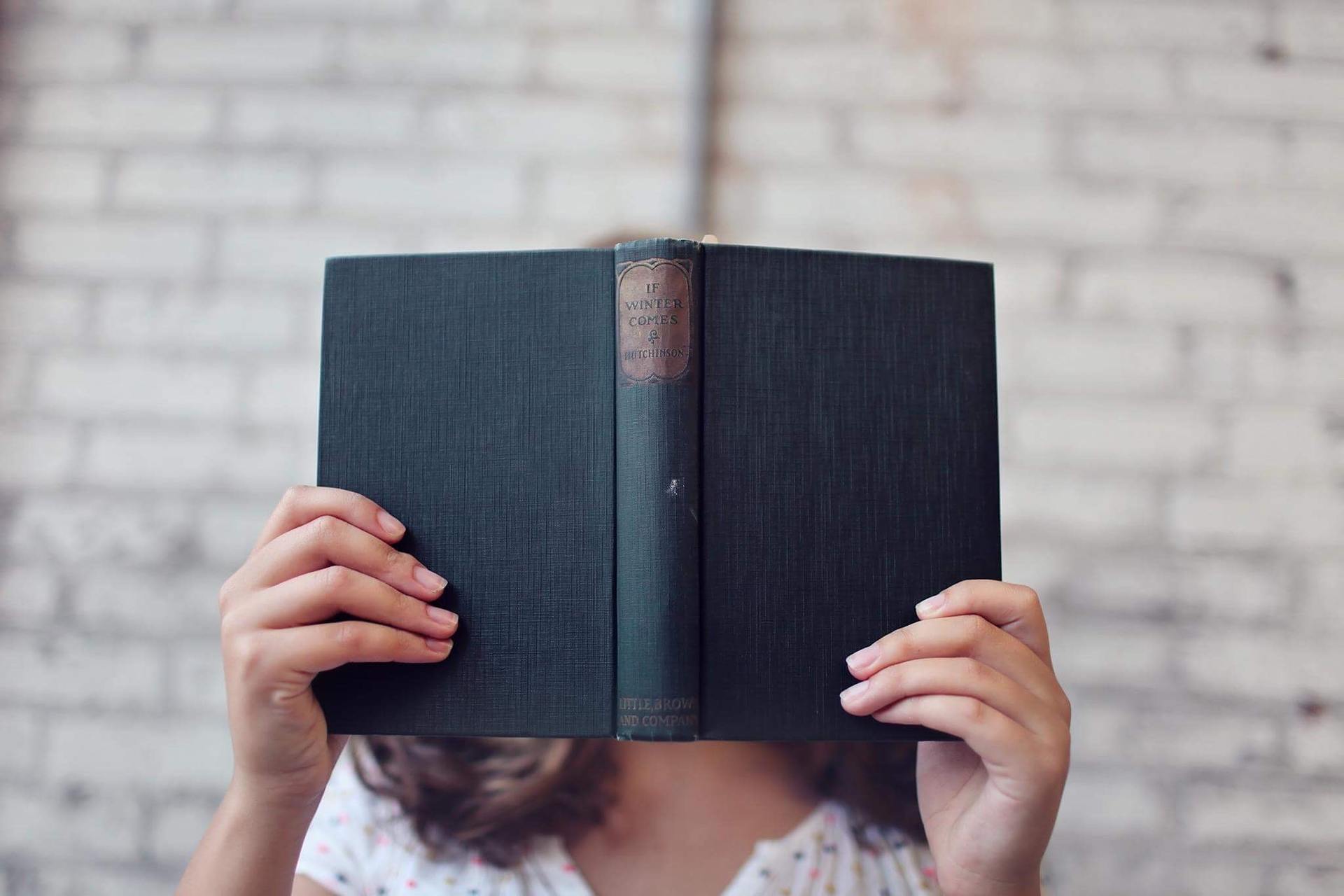
Studying for her English Lit exams this year, Imogen Usherwood found the curriculum full of texts written by men. She asks, where are all the women?
'Right girls, today I want us to look at the female voice in love poetry,’ said my English teacher, bustling into the room one Tuesday morning in March. Dutifully, we all whipped out our battered copies of Love Poetry Through the Ages and began running through its contents. ‘Can anyone suggest a poem where we hear the female voice?’
Of the 15 poems available to us, we could volunteer a measly three: Hardy’s ‘The ruined maid’; Keats’ ‘La belle dame sans merci’; and the only poem in the whole section actually written by a woman, ‘Remember’ by Christina Rossetti. In a selection of poetry tasked with charting the development of Love from the 1520s to 1900, only one female poet got so much as a look in. For an all-girls A Level English class taught by a formidably feminist female teacher, the lack of representation on offer was especially disheartening.
After scanning through all my A Level texts, I was disappointed to find only three female writers: Pat Barker, the aforementioned Rossetti and Jane Austen, whom we had dropped after AS Level. Worse, it had taken me nearly two years of studying to notice; we had always complained jokingly that the curriculum was full of DWEMs (dead, white, European males) but had never thought to question or challenge this until it confronted us directly.
This, of course, is where the issue lies: narrow female representation on the English syllabus, at both GCSE and A level, has become de rigueur. Across three of the biggest examination boards – OCR, Edexcel and AQA – women make up just 32 per cent of the writers of A Level set texts, and women of colour less than five per cent. Admittedly, representation at GCSE is broader, with closer to half of the names on the list being women, but it varies greatly from board to board. In practical terms, these figures are misleading anyway: pupils at GCSE must study a minimum of four texts, and the structure of the content makes a virtually all-male curriculum entirely possible depending on the combination chosen. It is impossible to study an all-female syllabus, not least because Shakespeare is obligatory.
One idea that emerges during any discussion about the literature syllabus, in English or otherwise, is the concept of the literary ‘canon’ and its impact on the curriculum. Indeed, the canon arguably includes any book that has been placed on a syllabus, as putting forward a writer for academic study suggests they are worthy of discussion and exploration, ‘essential reading’ even, and so deserve a place in the illustrious history of English literature.
This was emphasised in the 2015 GCSE reforms, which saw their first exams in 2017. The aim was to create a ‘broad and balanced curriculum’, but this balance seemed to focus more on chronological variety than social diversity. The four requirements laid out by the Department of Education were: one Shakespeare play; one 19th Century novel; a selection of poetry since 1789; and fiction or drama from the British Isles after 1914. No provisions regarding gender or ethnic representation, then. In the Department’s pursuit of ‘high-quality literature’, the focus also seems to have shifted towards traditional texts from Great Britain and Ireland (as opposed to the old GCSE, which featured ‘different cultures’); excluding a wide range of talent from across the world, and leading to the same (undoubtedly gifted) female writers appearing again and again – Austen, Brontë, Rossetti, Eliot.
I’m not willing to blame the government entirely for this; Ofqual set the parameters, sure, but it rests with exam boards to select writers and structure their syllabus. This demonstrates the two-way relationship between canon and curriculum, each shaping the other in equal part. Just as AQA adopted Frankenstein for its syllabus after teachers from 250 schools were surveyed for texts they wanted to teach, Meera Syal’s Anita and Me now takes pride of place on the GCSE curriculum for AQA, OCR and Edexcel, cementing her as a significant literary voice of our times. As such, the ‘canon’ is a constantly changing entity, and always has been.
Up until the early 20th Century, it was assumed that the canon of the 1600s and 1700s was almost entirely male, before the likes of Mary Wollstonecraft were embraced with open arms by the modern feminist movement. Attention must be drawn to gender and ethnic representation until it becomes a social norm. When asked to select two texts for our A Level coursework, many of my classmates picked a pair of female writers; we later wondered if this was a subconscious rebellion against the ‘male, pale and stale’ canon imposed upon us.
The main reason – and there are many – that I take issue with the lack of representation is the impact it has on us, the students. In May 2016, Woman’s Hour on Radio 4 discussed whether Lord of the Flies – a novel with an all-male cast of characters – should remain on the GCSE syllabus with no all-female equivalent. One listener said that her 16-year-old daughter had recently been told her class would not be studying Jane Eyre at A Level in September because it was ‘too girly’, despite having read Lord of the Flies at GCSE with no suggestion it was ‘too boyish’. This perpetuates the idea that ‘male’ is synonymous with ‘standard’, whereas ‘female’ is alternative, almost a genre in itself.
The crucial repercussion of this is the idea that women’s literature is just that – for women – and that only women should trouble themselves with intersectional feminism. My younger brother recently finished his GCSEs and, apart from half of his poetry anthology, all his English texts were written by men. He said that the idea of representation (or lack thereof) had never really occurred to him. The books he studied are established classics of GCSE, so nothing felt out of place. This normalises a minority role for women, which will be carried by students of all genders throughout their lives.
For my part, the main message I was taught by this male-dominated syllabus was twofold; firstly that the phrase ‘patriarchal society’ is essential in almost every essay, and secondly that, as a young woman aspiring to write for her living, I fear I’m fighting a losing battle before I even begin. When you are raised and educated on books which,two-thirds of the time, are written by men hailed as the finest producers of fiction, it’s not easy to imagine your own name slotted among theirs on the bookshelf. I can only imagine the severity with which this is felt by young students of colour.
So, what to do? This may be controversial, but I do not believe a 50-50 ratio of male to female writers to be the solution. Literary history is not the House of Commons, or the boardroom, or indeed any other workplace whose composition ought to reflect a society that is 50 per cent women. It is true that, historically, there are more texts written by men than by women, and there are periods and subsections of literature where this is especially the case. But I do want a syllabus that accurately reflects the brilliant and immensely valuable capacity of female writers throughout history and now, especially where there is an abundance of female talent. I’m not asking for exactly half of all set texts to be written by women, just for this supposedly ‘broad and balanced’ curriculum to do what it says on the tin.
Take the poetry cluster that started this discussion: it presents love through an almost exclusively male lens, sometimes treating women as equals, but other times pursuing, sexualising or idolising them. Of course, such poems should be studied. These themes are essential to understanding the development of love poetry across time – but so is the role of women, especially in a genre that doesn’t lack female contributors. At the minimum, where were Barrett Browning, Dickinson and the Brontës in that anthology?
So, it’s not time to put the Chaucers, the Dickenses, the Betjemans and the Orwells back on the shelf – of course it’s not – but it might be time to dust off a few more women to join their ranks.
More than that, work by female writers needs to be picked up, opened, read, explored, questioned, scrutinised, analysed and adored. They need to be recognised, and presented to students in all their brilliant eloquence – we don’t need to balance the books, so much as stop sacrificing a diverse range of talent for the sake of tradition.
IMOGEN USHERWOOD is currently studying for an MSt in Creative Writing at Oxford University, having earned her BA in English Literature from Durham University in 2021. Her fiction has appeared in Joyland Magazine, and she has written feature for publications including Mslexia. She is represented by Edwina de Charnace at Mulcahy Sweeney Associates (part of MMB Creative).
This article was originally published in Issue 79 of Mslexia.

